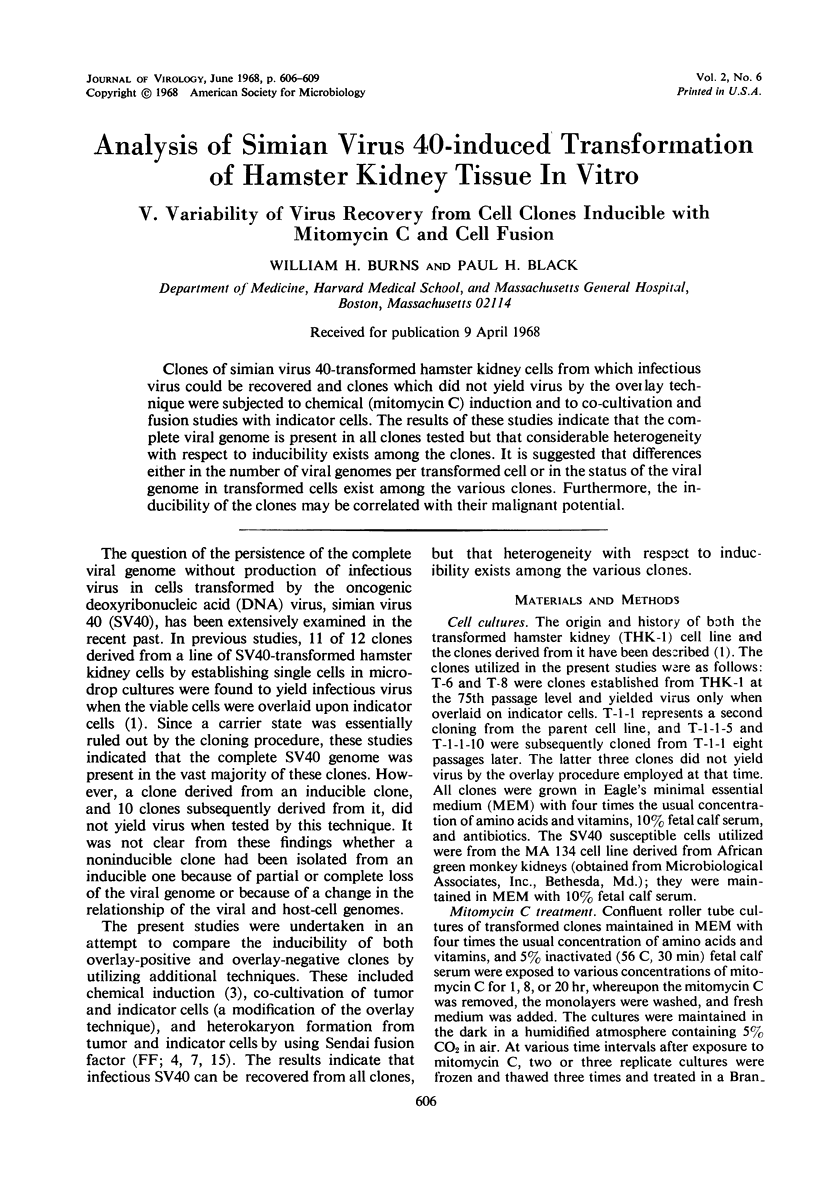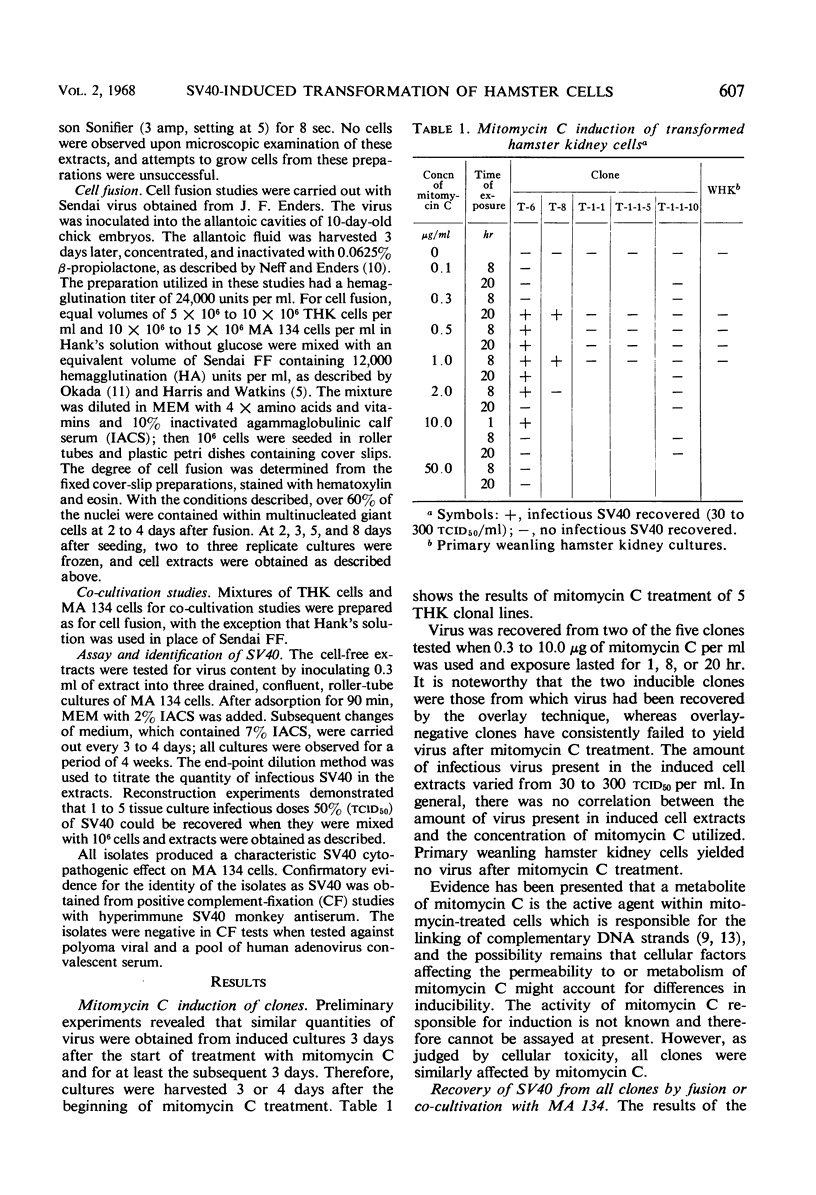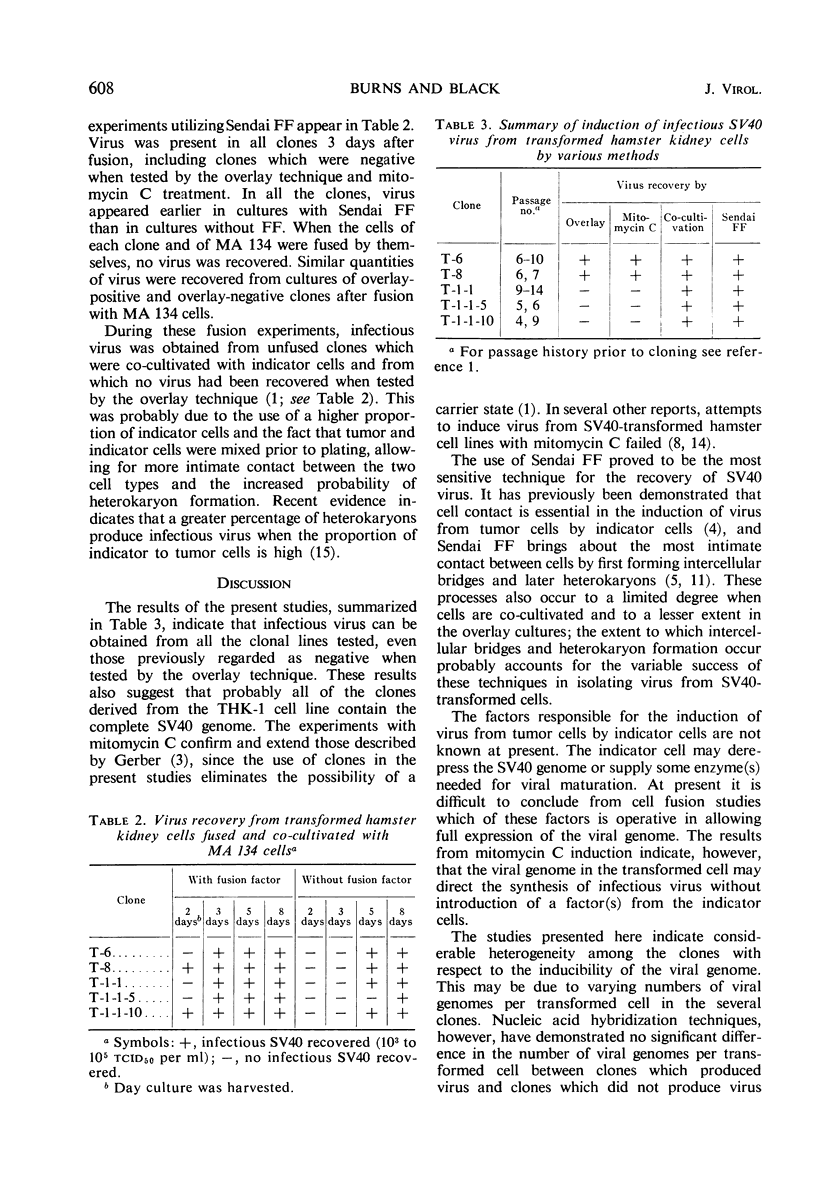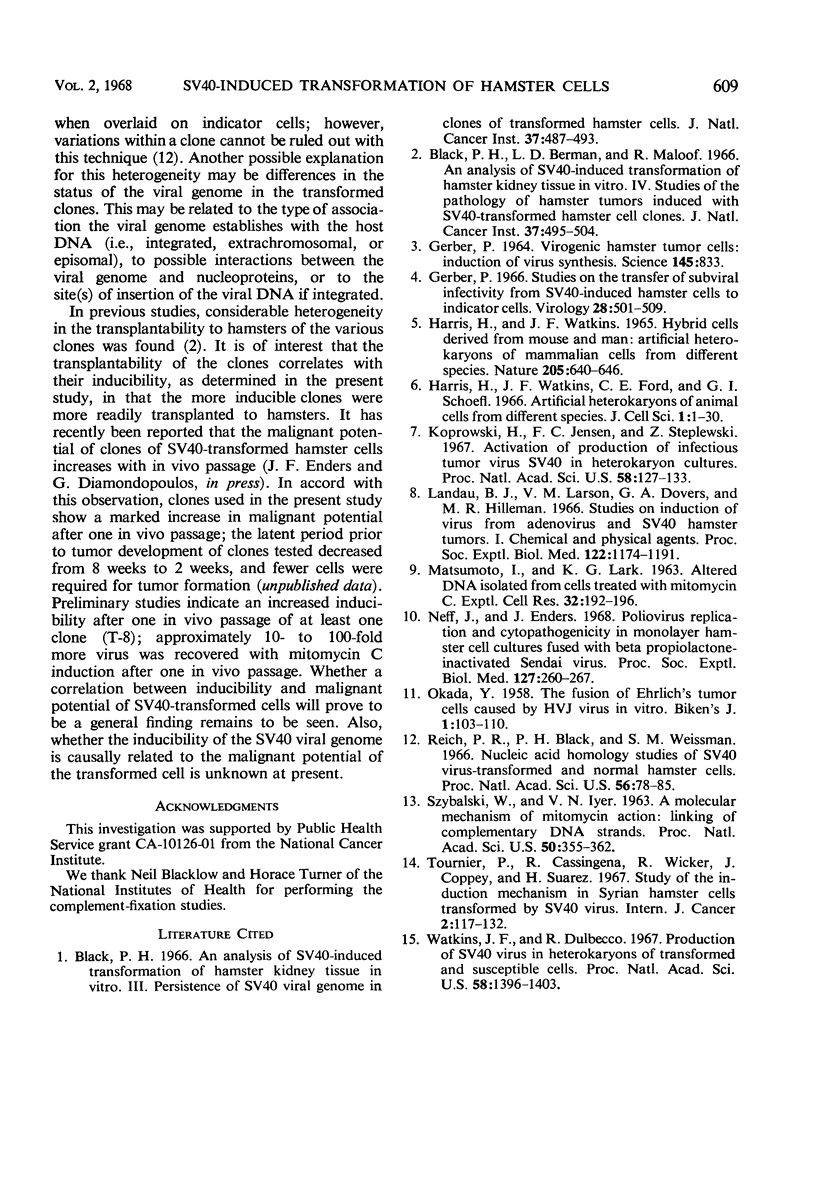Abstract
Clones of simian virus 40-transformed hamster kidney cells from which infectious virus could be recovered and clones which did not yield virus by the overlay technique were subjected to chemical (mitomycin C) induction and to co-cultivation and fusion studies with indicator cells. The results of these studies indicate that the complete viral genome is present in all clones tested but that considerable heterogeneity with respect to inducibility exists among the clones. It is suggested that differences either in the number of viral genomes per transformed cell or in the status of the viral genome in transformed cells exist among the various clones. Furthermore, the inducibility of the clones may be correlated with their malignant potential.
Full text
PDF



Selected References
These references are in PubMed. This may not be the complete list of references from this article.
- Black P. H. An analysis of SV40-induced transformation of hamster kidney tissue in vitro. 3. Persistence of SV40 viral genome in clones of transformed hamster cells. J Natl Cancer Inst. 1966 Oct;37(4):487–493. [PubMed] [Google Scholar]
- Black P. H., Berman L. D., Maloof R. An analysis of SV40-induced transformation of hamster kidney tissue in vitro. IV. Studies of the pathology of hamster tumors induced with SV40-transformed hamster cell clones. J Natl Cancer Inst. 1966 Oct;37(4):495–504. [PubMed] [Google Scholar]
- GERBER P. VIROGENIC HAMSTER TUMOR CELLS: INDUCTION OF VIRUS SYNTHESIS. Science. 1964 Aug 21;145(3634):833–833. doi: 10.1126/science.145.3634.833. [DOI] [PubMed] [Google Scholar]
- Gerber P. Studies on the transfer of subviral infectivity from SV40-induced hamster tumor cells to indicator cells. Virology. 1966 Apr;28(4):501–509. doi: 10.1016/0042-6822(66)90234-0. [DOI] [PubMed] [Google Scholar]
- HARRIS H., WATKINS J. F. HYBRID CELLS DERIVED FROM MOUSE AND MAN: ARTIFICIAL HETEROKARYONS OF MAMMALIAN CELLS FROM DIFFERENT SPECIES. Nature. 1965 Feb 13;205:640–646. doi: 10.1038/205640a0. [DOI] [PubMed] [Google Scholar]
- Harris H., Watkins J. F., Ford C. E., Schoefl G. I. Artificial heterokaryons of animal cells from different species. J Cell Sci. 1966 Mar;1(1):1–30. doi: 10.1242/jcs.1.1.1. [DOI] [PubMed] [Google Scholar]
- IYER V. N., SZYBALSKI W. A MOLECULAR MECHANISM OF MITOMYCIN ACTION: LINKING OF COMPLEMENTARY DNA STRANDS. Proc Natl Acad Sci U S A. 1963 Aug;50:355–362. doi: 10.1073/pnas.50.2.355. [DOI] [PMC free article] [PubMed] [Google Scholar]
- Koprowski H., Jensen F. C., Steplewski Z. Activation of production of infectious tumor virus SV40 in heterokaryon cultures. Proc Natl Acad Sci U S A. 1967 Jul;58(1):127–133. doi: 10.1073/pnas.58.1.127. [DOI] [PMC free article] [PubMed] [Google Scholar]
- Landau B. J., Larson V. M., Devers G. A., Hilleman M. R. Studies on induction of virus from adenovirus and SV40 hamster tumors 1. Chemical and physical agents. Proc Soc Exp Biol Med. 1966 Aug-Sep;122(4):1174–1182. doi: 10.3181/00379727-122-31355. [DOI] [PubMed] [Google Scholar]
- MATSUMOTO I., LARK K. G. ALTERED DNA ISOLATED FROM CELLS TREATED WITH MITOMYCIN C. Exp Cell Res. 1963 Oct;32:192–196. doi: 10.1016/0014-4827(63)90089-2. [DOI] [PubMed] [Google Scholar]
- Neff J. M., Enders J. F. Poliovirus replication and cytopathogenicity in monolayer hamster cell cultures fused with beta propiolactone-inactivated Sendai virus. Proc Soc Exp Biol Med. 1968 Jan;127(1):260–267. doi: 10.3181/00379727-127-32668. [DOI] [PubMed] [Google Scholar]
- Reich P. R., Black P. H., Weissman S. M. Nucleic acid homology studies of SV 40 virus-transformed and normal hamster cells. Proc Natl Acad Sci U S A. 1966 Jul;56(1):78–85. doi: 10.1073/pnas.56.1.78. [DOI] [PMC free article] [PubMed] [Google Scholar]
- Tournier P., Cassingena R., Wicker R., Coppey J., Suarez H. Etude du mécanisme de l'induction chez des cellules de hamster syrien transformées par le virus SV40. I. Propriétés d'une lignée cellulaire clonale. Int J Cancer. 1967 Mar 15;2(2):117–132. doi: 10.1002/ijc.2910020207. [DOI] [PubMed] [Google Scholar]
- Watkins J. F., Dulbecco R. Production of SV40 virus in heterokaryons of transformed and susceptible cells. Proc Natl Acad Sci U S A. 1967 Oct;58(4):1396–1403. doi: 10.1073/pnas.58.4.1396. [DOI] [PMC free article] [PubMed] [Google Scholar]


